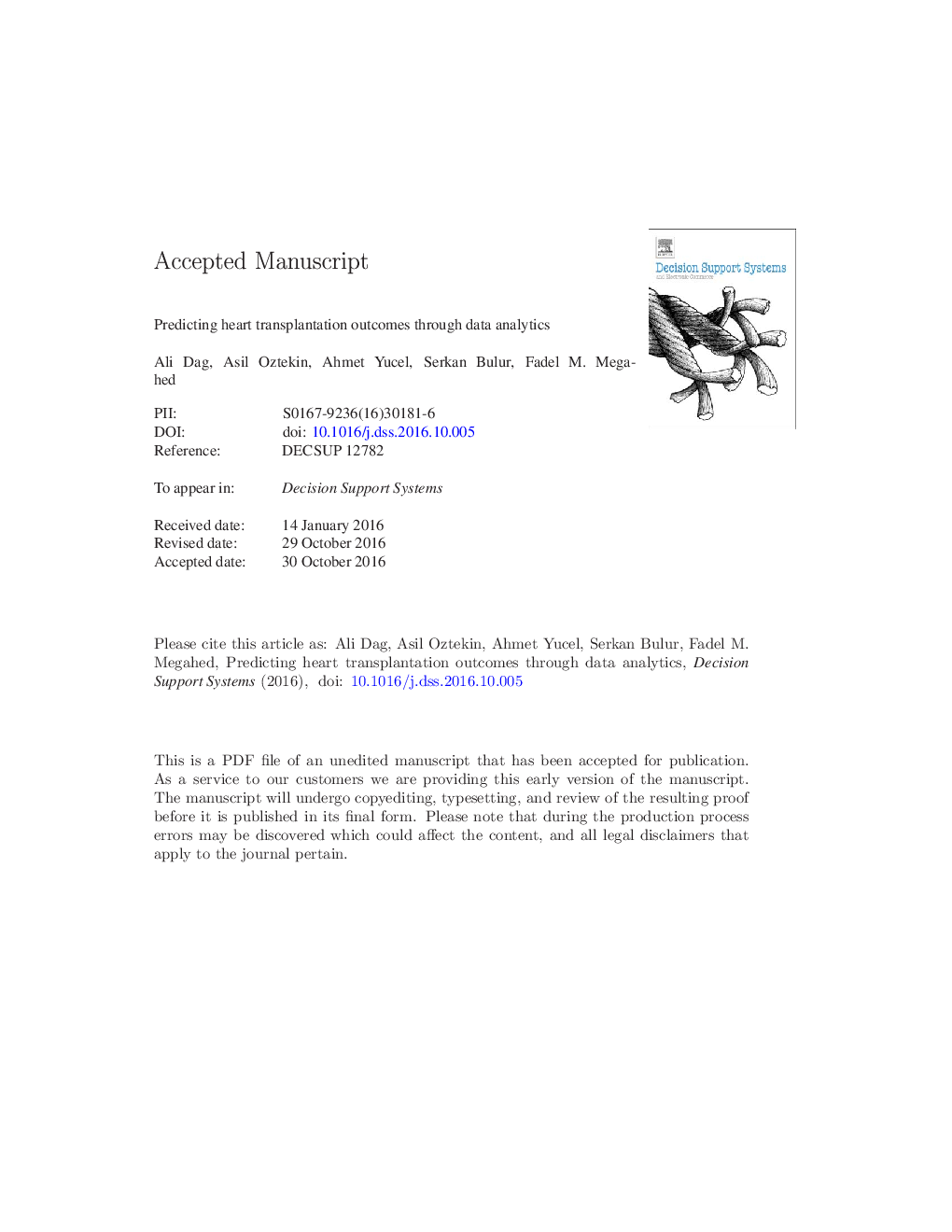| Article ID | Journal | Published Year | Pages | File Type |
|---|---|---|---|---|
| 4972498 | Decision Support Systems | 2017 | 32 Pages |
Abstract
Predicting the survival of heart transplant patients is an important, yet challenging problem since it plays a crucial role in understanding the matching procedure between a donor and a recipient. Data mining models can be used to effectively analyze and extract novel information from large/complex transplantation datasets. The objective of this study is to predict the 1-, 5-, and 9-year patient's graft survival following a heart transplant surgery via the deployment of analytical models that are based on four powerful classification algorithms (i.e. decision trees, artificial neural networks, support vector machines, and logistic regression). Since the datasets used in this study has a much larger number of survival cases than deaths for 1- and 5-year survival analysis and vice versa for 9-year survival analysis, random under sampling (RUS) and synthetic minority over-sampling (SMOTE) are employed to overcome the data-imbalance problems. The results indicate that logistic regression combined with SMOTE achieves the best classification for the 1-, 5-, and 9-year outcome prediction, with area-under-the-curve (AUC) values of 0.624, 0.676, and 0.838, respectively. By applying sensitivity analysis to the data analytical models, the most important predictors and their associated contribution for the 1-, 5-, and 9-year graft survival of heart transplant patients are identified. By doing so, variables, whose importance changes over time, are differentiated. Not only this proposed hybrid approach gives superior results over the literature but also the models and identification of the variables present important retrospective findings, which can be the basis for a prospective medical study.
Keywords
Related Topics
Physical Sciences and Engineering
Computer Science
Information Systems
Authors
Ali Dag, Asil Oztekin, Ahmet Yucel, Serkan Bulur, Fadel M. Megahed,
